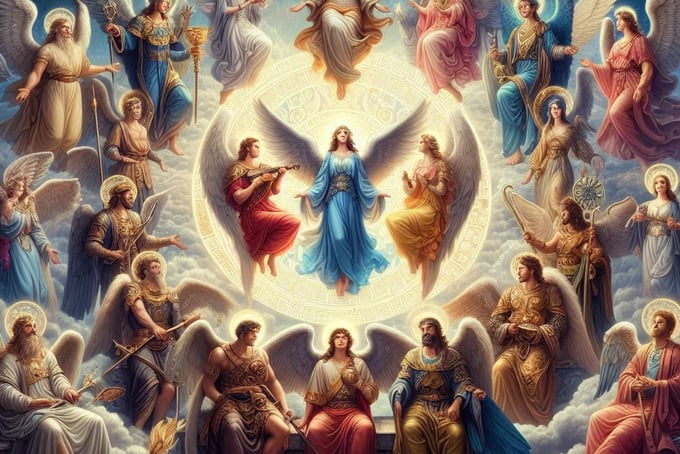Angels in various mythological traditions
Angels have been a part of human mythology and religious traditions for millennia, appearing in various forms and serving different roles across cultures. These celestial beings often act as intermediaries between the divine and the mortal, embodying virtues, wisdom, and sometimes even wrath. This blog post delves into the fascinating world of angels as depicted in different mythological traditions.
11/23/20242 min read


Angels in Abrahamic Religions
Judaism
In Jewish tradition, angels are known as "mal'akhim," which means "messengers." They are considered to be agents of God, carrying out divine will. The Hebrew Bible mentions several angels, including Michael, Gabriel, and Raphael. Michael is often depicted as a warrior angel, Gabriel as a messenger, and Raphael as a healer.
Christianity
Christianity inherited the concept of angels from Judaism but expanded on their roles and hierarchies. Angels are often categorized into different orders, such as seraphim, cherubim, and archangels. The New Testament frequently mentions angels, particularly in the context of the Annunciation, where Gabriel informs Mary of her impending birth of Jesus. Angels are also seen as protectors and guides for humans.
Islam
In Islam, angels (known as "mala'ika") are considered to be created from light and are entirely obedient to Allah. They have various roles, including recording human deeds, delivering revelations, and taking souls at the time of death. Notable angels in Islamic tradition include Jibril (Gabriel), who delivered the Quran to Muhammad, and Israfil, who will blow the trumpet to announce the Day of Judgment.
Angels in Zoroastrianism
Zoroastrianism, one of the world's oldest monotheistic religions, also features angelic beings known as "yazatas." These entities are considered worthy of worship and serve as intermediaries between Ahura Mazda (the supreme god) and humans. Each yazata has a specific function, such as Mithra, who is associated with covenants and oaths, and Sraosha, who represents obedience and divine order.
Angels in Hinduism
In Hindu mythology, the concept of angels is somewhat different but still present. Devas and apsaras can be considered angelic beings. Devas are celestial beings who inhabit the higher realms and are often associated with natural forces like rain, wind, and fire. Apsaras are celestial nymphs known for their beauty and dance, often serving as companions to the gods.
Angels in Buddhism
Buddhism does not have a direct equivalent to angels but features celestial beings known as "devas" and "bodhisattvas." Devas are divine beings who reside in various heavens and are often seen as protectors of the Dharma (Buddhist teachings). Bodhisattvas are enlightened beings who choose to remain in the cycle of rebirth to help others achieve enlightenment, acting as compassionate guides.
Angels in Ancient Mesopotamian Religions
In ancient Mesopotamian religions, particularly Sumerian and Babylonian traditions, there were beings known as "apkallu" or "watchers." These entities were considered wise and knowledgeable, often depicted as fish-like or bird-like creatures. They served as intermediaries between the gods and humans, imparting wisdom and guidance.
Conclusion
Angels, in their various forms and functions, have captivated human imagination across cultures and epochs. Whether as messengers, protectors, or divine agents, these celestial beings continue to inspire and fascinate, embodying the eternal connection between the mortal and the divine. Understanding the diverse roles and representations of angels in different mythological traditions enriches our appreciation of these timeless figures.



